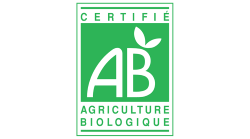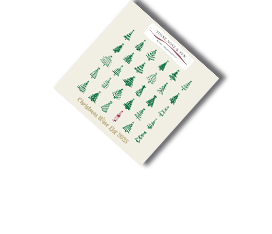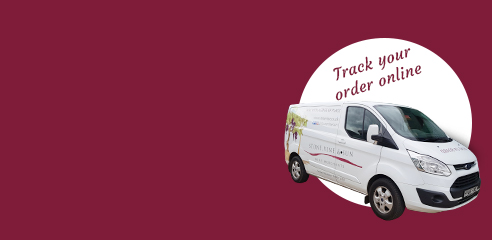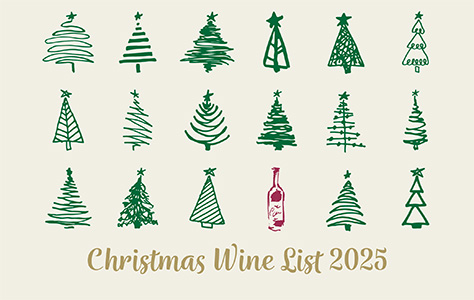Organics & Biodynamics
25th September 2024
Organics & Biodynamics
Fifteen years ago I wrote the following. “At Stone, Vine & Sun we never set out to offer a wide range of wines from organically cultivated grapes: we have always selected wines to offer here on the basis of their intrinsic quality and value, irrespective of their manner of viticulture”. We continue to stick to that rule. At the same time, one can’t help noticing that more and more of the people we buy from follow organic practice.
What does this mean? The broad objectives of the organic movement are ones we should all subscribe to: to maintain the fertility of the soil; to encourage bio-diversity; to exclude the use of artificial / chemical fertilisers, pesticides, herbicides and fungicides; and likewise to eschew genetically modified materials. (This isn’t to say the vines are just left untended: for example the traditional Bordeaux mixture, made from copper sulphate and lime, is permitted to spray on the vines to inhibit fungal diseases; and in the EU some twenty pesticides are permitted, all from natural ingredients). In addition, in the cellar there are rules limiting the use of additives and the level of sulphites in organic wines.
The home of organic viticulture is very much Europe, and within that the Mediterranean countries. About ¾ of the organically certified vineyards in the world lie within Spain, Italy and France. The Mediterranean climate, with a long, hot, dry summer and a pattern of cleansing winds, is perfect for growing vines and minimising disease. Within Europe, organic viticulture has been growing (admittedly from a low base) for most of this century by about 13% a year.

Given that it requires harder work - and the risk of lower yields - to cultivate vines organically, especially in cool and damp regions, why do so many do it? First, many have been motivated by the results of ongoing research showing that old vineyards treated for many years with industrial quantities of herbicides, fungicides, pesticides and synthetic fertilisers (in particular in Bordeaux) are frighteningly sterile places; and that wines from these vineyards can show unpleasant and possibly even dangerous levels of chemicals and metals (for example copper from Bordeaux mixture can build up in the soil). Choosing the hard path of organics - working longer hours in the vineyard on ploughing to remove weeds, canopy management to ensure the healthy circulation of air among the bunches, and planting cover crops to reduce moisture and/or encourage beneficial insect life - is part of a wider movement in agriculture which rejects chemical and industrial solutions in aiming to grow more “natural” products, and which believes in a duty of care to the environment. Second, and as important, most believe their wines are the better for being produced from organically grown grapes. Third, these families will certainly be the largest consumers of their own wine – they want to be sure they are enjoying a liquid free from chemical taint.
Several of our growers go further than just working with organics. Some passionately embrace biodynamics. This is a branch of organic farming developed from the ideas of the Austrian Rudolf Steiner (1861-1925). Steiner himself was a man of very wide-ranging interests (inventing his own philosophy, anthroposophy), and his thinking about agriculture, only started at the very end of his life in 1924, when he was approached for advice by some German farmers. As in organics, the intentions are noble and practical: to make the farm a self-sustaining, holistic entity as much as possible, requiring the extensive use of composting, and thus keeping inputs from the wider world to a minimum. Cultivating the land (and working in the cellar) is dictated by a complex calendar relating to the movements of the moon, planets and constellations. The week is divided up into root, leaf, flower and fruit days (and compounds of these) and activities are dictated accordingly. For example, pruning should be done on root days to minimise harm to the vine. There’s a lot of sense in this: if the moon can pull the tides it can certainly affect plants; and insects known to hatch by phases of the moon can be guarded againt. It’s easy to sneer at biodynamics - Wikipedia call it “a form of alternative agriculture based on pseudo-scientific and esoteric concepts”- because it calls for some techniques which seem of dubious benefit; in particular filling a cow’s horn with ground quartz silica and burying it in a corner of the vineyard to revitalise soil life; and the use of sprays of solutions based on horn or manure or plants such as chamomile, yarrow and valerian, energised by lengthy stirring (first one way and then the other), then diluted in a homeopathic manner.

However, among some eight hundred biodynamic estates, many of the greatest in the world follow this regime for at least part of their production: DRC, Leroy and Leflaive (and our own Huber-Verdereau) in Burgundy; Latour and Palmer in Bordeaux; Roedererer in Champagne; Zind-Hubrecht in Alsace; Chapoutier in the Rhône; in Italy Alois Lageder and Occhipinti; in Chile Sena and Clos Apalta; and in New Zealand Felton Road. Would all these top wine producers adopt biodynamics if they didn’t believe the practice improved their wines?
There are a number of bodies which give certification. In the EU, the leaf symbol is best known for organics and Demeter for biodynamics. As a general rule, three years of “conversion”, i.e. three years of organic practice, is necessary before certification. Many estates undertake organic and/or biodynamic field work without bothering to go through the time consuming administration and costly process of certification. Even those who do gain certification often do not trumpet it on their labels: it’s often buried in tiny type or omitted altogether – some don’t want to use it as marketing.
Do these wines cost a little more? One report indicates that an organic vineyard demands about 50% more manpower. At the same time, many vineyards have reduced their inputs by espousing organics. But even if the wines are more expensive, isn’t that extra cost as justifiable as paying a little more for an English chicken (not even an organic one), raised to higher welfare standards than one reared in a bird-factory in Thailand? Or a traceable organic root vegetable rather than one possibly contaminated by heavy metals? We have to accept that drinking alcohol is a health risk – at least let’s minimise that by enjoying a purer product.
Can one taste the difference? Sometimes I think one can, sensing an enticing purity and vibrancy of fruit in the wines from growers such as Le Tende, Fiorano, Mas des Brousses, Espiers, Garriguettes and Verzier. My final comment: if these growers and winemakers are prepared to go the extra mile in tending their vines organically and/or biodynamcally then there’s every chance the liquid in their bottles is not only purer but also more likely to benefit from the same painstaking and perfectionist approach. To return to my observation that “more and more of the people we buy from follow organic practice”: is this because we find their wines better than those of their more traditional peers?




